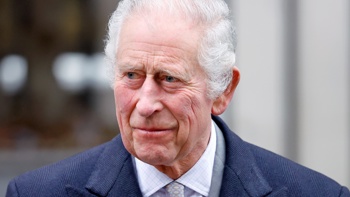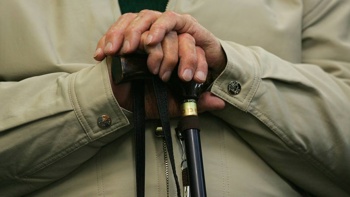The cost of living crisis and Covid-19 appears not to have dramatically impacted child poverty levels as feared with the latest statistics showing little movement but still nearly 120,000 Kiwi children struggling to get by.
And with the official data release covering the year to June 2022, just as the cost of living crisis began to bite with record inflation, the worst could be yet to come.
Overall, the number of children in child poverty has trended down slightly in the year to June 2022, continuing an overall gradual decrease in eight of the nine measures since they were established in 2018, according to a report from Statistics NZ released today.
Addressing child poverty was a priority of former Prime Minister Jacinda Ardern, who was also the minister responsible during her term in office.
Since 2018, there were 77,000 children living in poverty after housing costs were factored in, and 28,700 fewer children experiencing material hardship.
However, there remain stark disparities for Māori, Pasifika and disabled children and poor and expensive housing continues to be a major factor.
Minister for Child Poverty Reduction Jan Tinetti, who took over after Ardern resigned this year, said despite the Covid-19 pandemic and resulting economic shock child poverty figures were steady.
“It shows the Government’s policies targeting kids and families are helping.”
But the Government support partner the Green Party say progress has still been too slow, and is urging the Government to immediately raise benefit levels and increase and widen family income supports, which the Herald this week revealed an expert review found was the “best opportunity” to significantly reduce child poverty.
Child poverty reduction targets were introduced in 2018, with both three-year periods and longer-term 10-year targets to more than halve child poverty from a 2017/18 baseline.
- Establish Child Poverty Act to end NZ's billion dollar problem - expert
- Child poverty report: Political decision-making kept welfare below poverty line
- Greens call on Govt to budget for child poverty
The targets for 2023/24 include:
- Reduction in the before-housing-costs measure from 16.5 to 10 per cent – lifting around 70,000 children out of poverty
- Reduction in the after-housing-costs measure from 22.8 to 15 per cent – lifting around 80,000 children out of poverty
- Reduction in the number of children experiencing material hardship from 13.3 to 9 per cent – lifting around 40,000 children out of hardship
The latest figures show the Government is largely on track to meet those next targets.
On children in poverty before housing costs, for 2021/22 it had dropped to 12 per cent from 13 per cent. The percentage of children in poverty after housing costs was now at 15.4 per cent - up slightly from 15 per cent the year prior.
And the percentage of children experiencing material hardship had also dropped from 11 per cent to 10.3 per cent.
Tinetti said it showed programmes like the wage subsidy, doubling winter energy payments, increasing tax credit payments through Working for Families and benefit levels were effective and helped “avoid the big increases in child poverty rates in the 2021/22 that some feared and expected”.
Officials had warned child poverty could see a slight increase due to the economic situation with high inflation and cost of living issues.
“We are starting to see the longer-term benefits to the changes we have implemented over the last five years since taking office,” Tinetti said.
“Reducing child poverty will take time, but the evidence shows we are moving in the right direction.”
Green Party social development spokesman Ricardo Menéndez March said progress to lift children out of poverty was far too slow.
“The tools to lift every family and child out of poverty exist, the Government just needs to use them.
“They can start by increasing benefits to liveable levels, expanding Working for Families, and doubling Best Start and making it universal for the first three years.”
Child poverty is measured using data from the Household Economic Survey. Levels of poverty are determined against nine measures, including household disposable income and material hardship.
There is a tenth measure, poverty persistence, but reporting is not required until 2025.
The data uses household disposable income per person – money available after tax – at seven different thresholds. The primary measure is households with less than half of the median disposable income.
There are 17 questions used to measure material deprivation, such as the need to postpone visits to the doctor or having two pairs of shoes in good condition.A household is classed as facing material hardship if they lack six or more of the 17 items and in severe material hardship if they lack nine or more.
The statistics showed on the after-housing costs measure, there were 15,700 fewer tamariki Māori living in poverty compared to 2018/19 and 20,700 fewer children impacted by disability living in poverty. However, vast inequities remained.
One in five Māori children and one in four Pacific children lived in material hardship, with no change compared to 2019. This compared to one in 10 children overall, which had reduced from about one in eight in 2019.
The disparities were lower when looking at incomes before and after housing costs.
Covid affected the ability for Stats NZ to conduct in-person Household Economic Survey interviews in 2020 and 2021.
Last year about 8900 households were surveyed - under half the target of 20,000.
Usually, interviews are conducted evenly over the year, however, Stats NZ said they are confident, despite disruptions, that the data collected over this period is fit-for-purpose despite the smaller sample size.
Last year’s statistics found the number of children in child poverty had trended down over the first three-year period but the Government did not meet all of its targets.
Overall, 66,500 children had been lifted out of poverty over the initial time period.
Wider welfare reform
The Government has been working on a programme to overhaul welfare system since 2017, including implementing 42 recommendations
This week the Herald revealed progress in implementing the recommendations remained slow.
One of the key recommendations was reforming income support for families - the Working for Families programme and various tax credits.
Campaigners have been urging the Government to broaden the number of families who receive the in-work tax credit, a payment of $72.50 a week for families with one to three children (and $15 a week for every fourth and following child).
A Government review into the programme, also revealed by the Herald this week, found anti-poverty groups said this tax credit “should be paid to all families and not just those who are off a benefit and in paid work”.
“These stakeholders argued that the payment was discriminatory or unfair, particularly given children were unable to choose whether their parents were working. They also emphasised the need to value other contributions people make, such as caring for children or voluntary work,” the review said.
It warned that changing Working for Families soon represented the “best opportunity in the coming years to achieve substantial reductions in measured child poverty and to make significant ‘headway’ towards achieving the 10-year targets”.
Take your Radio, Podcasts and Music with you









